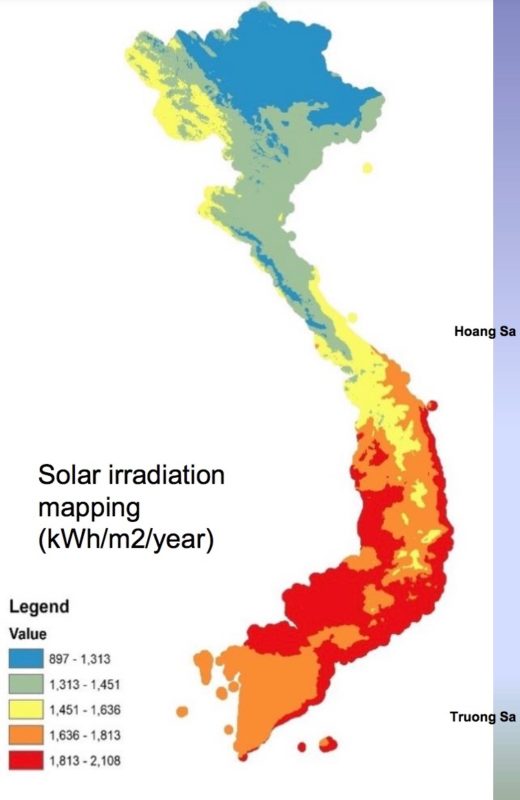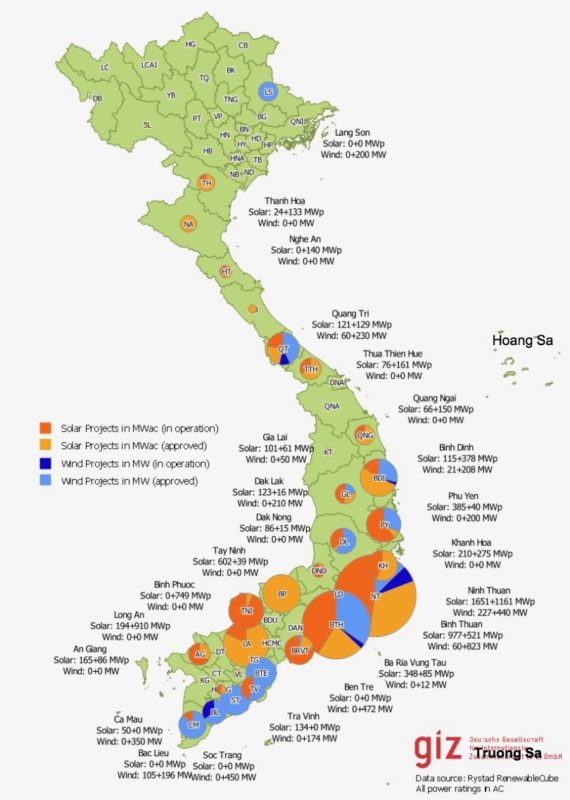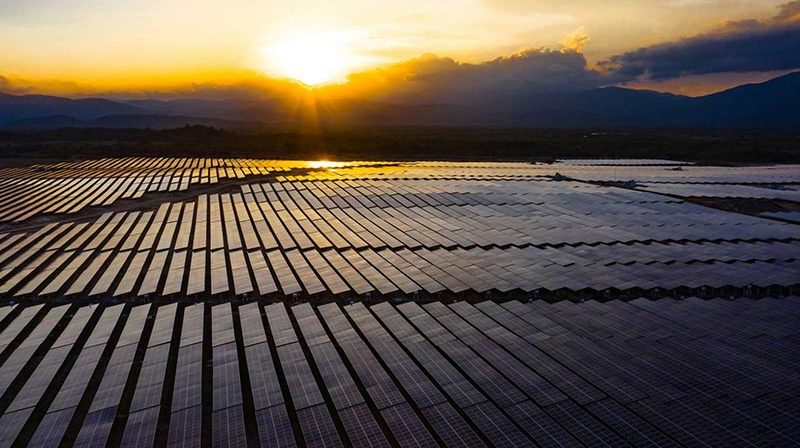Vietnamese construction company Trungnam Group has announced the inauguration of what is thought to be the nation’s biggest solar project – the 450 MW Trung Nam Thuan Nam Solar Plant, in the southeastern province of Ninh Thuan.
The company on Monday announced completion of the project, including associated electricity grid improvements, and said the solar plant had been completed within 102 days of finance being agreed in April.
Trungnam stated the solar project, in the Phuoc Minh commune of Ninh Thuan’s Thuan Nam district, would generate 1.2 GWh of solar electricity in its first year of operation and “more than” 1 GWh annually thereafter.
The company said some 8,000 labourers and engineers carried out land clearance of the site in just 45 days and said it had joined with public bodies the Vietnamese Fatherland Front, the Thuan Nam communal people’s committee, and the provincial association of poor patients to donate 102 houses worth a total VND5.1 billion ($220,000) to poor households during the build phase.
Noting that the government wanted Ninh Thuan province to become a “national renewable energy centre,” Trungnam said the 500 kV transformer station and 220/500 kV power line installed as part of the project would enhance the grid in the province and the wider south central coast region.
Rooftop solar surge
A 450 MW solar plant is doubtless a sign of strong solar awareness in Vietnam, particularly in the country’s highly irradiated southern and south-eastern provinces (such as Ninh Thuan), but a new report is also highlighting the surge in residential as well as commercial and industrial rooftop solar. Indeed, at the end of August, 567.68 MWp had been installed in the southern region of Vietnam, eclipsing the central region of the country with 390.91 MWp.

Image: Minister Tuan A. Nguyen,
Vietnamese Institute of Energy
These growing numbers are largely thanks to a generous solar feed-in tariff (FIT) which have taken Vietnam’s PV market from a mere 100 MW at the end of 2018, to around 5.7 GW at the end of last year. According to Minister Tuan A. Nguyen’s numbers, provided in a Jinko webinar on October 14th, 2020: As of June this year, 5,678 MW of ground-mounted PV were in operation, in addition to 47.5 MW of floating PV and 800 MW of RTS systems. The latter category involves systems below 1 MW of capacity, which are not required to go through the approval process required of larger plants.Those numbers have continued to grow through August, with Tuan’s figures showing the rooftop solar market increasing by 48,631 installations with a cumulative capacity of 1,168.1 MWp.

The FIT era is likely to conclude at the end of 2020, at least for large scale ground-mounted systems, but the current FIT rates for ground-mounted systems are likely to live on in the form of price ceilings in competitive auctions. Solar enthusiasts will remember China employing a similar policy metempsychosis in turning a straightforward national solar FIT regime into a competitive auction process. Vietnam is likely to mark the beginning of a similar auction process in Vietnam, while the regular FIT mechanism should still apply in the rooftop sector.
According to Tuan a full 85% of rooftop systems installed in Vietnam are residential arrays. However, C&I installs are expected to grow now that Vietnam is allowing so-called Private PPAs between a system owner and a private offtaker.
Combine C&I growth with continued residential uptake and the clear market for utility-scale solar as demonstrated by the Trung Nam Thuan Nam Solar Plant, and Vietnam’s energy makeup is primed for significant change in the coming decade. Indeed ,as Minister Tuan pointed out last week, the share of solar in the country’s Power Development Plan (PDP) has grown from just 12 GW by 2030 (PDP 7 issued in March 2016), to as much as 21 GW by 2030 in PDP 8 (expected to be approved early 2021).
This content is protected by copyright and may not be reused. If you want to cooperate with us and would like to reuse some of our content, please contact: editors@pv-magazine.com.









5 comments
By submitting this form you agree to pv magazine using your data for the purposes of publishing your comment.
Your personal data will only be disclosed or otherwise transmitted to third parties for the purposes of spam filtering or if this is necessary for technical maintenance of the website. Any other transfer to third parties will not take place unless this is justified on the basis of applicable data protection regulations or if pv magazine is legally obliged to do so.
You may revoke this consent at any time with effect for the future, in which case your personal data will be deleted immediately. Otherwise, your data will be deleted if pv magazine has processed your request or the purpose of data storage is fulfilled.
Further information on data privacy can be found in our Data Protection Policy.